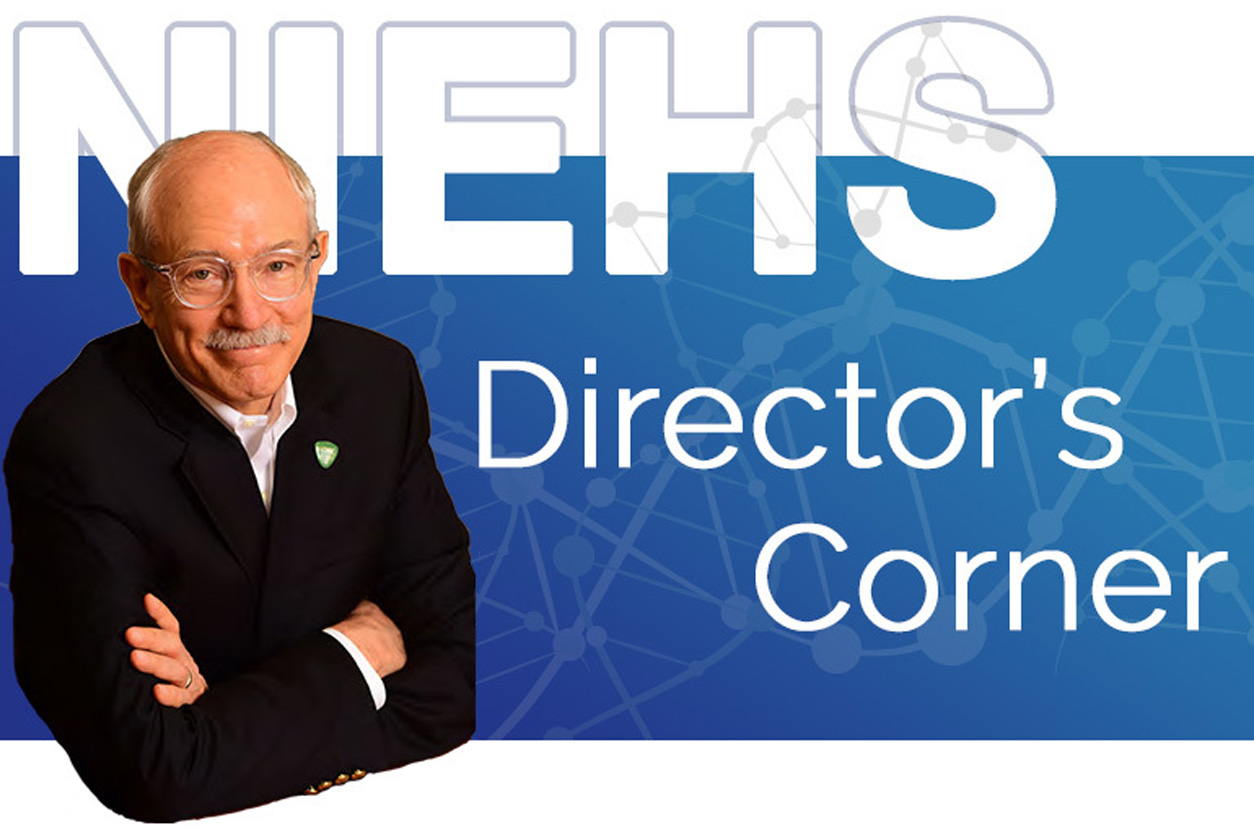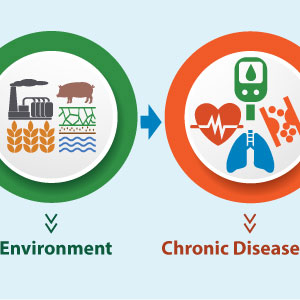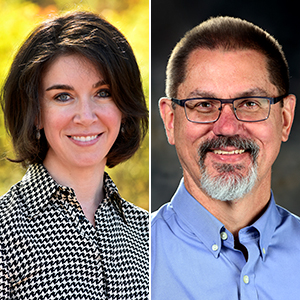
When it comes to understanding the causes of autism, it is likely that there are more families, researchers, and health professionals seeking answers now than ever before. According to the latest data from the Centers for Disease Control and Prevention, the prevalence of autism among American children increased from one in 150 in the year 2000 to one in 36 by 2020.
In April, as NIEHS recognized Autism Awareness Month, I spoke with an early-career scientist who explained that although increased testing for the condition has contributed to higher rates, it is also likely that complex interactions between people’s genes and environment are at play.
Katie Eyring, Ph.D., is an NIEHS-funded postdoctoral research fellow at the University of California, Los Angeles (UCLA), where she aims to expand knowledge about how prenatal environmental exposures may affect brain development and influence disorders such as autism. (See sidebar for more information on her academic training and personal background.)
She works to leverage and develop research tools such as cell models that can mimic neural circuitry during development, and high-volume chemical screening platforms that can test numerous compounds at once. The ultimate goal is to learn how exposures may increase autism risk in people who are predisposed to the condition due to their genetic and biological makeup.
Scientific breakthroughs have boosted understanding of genetic links to autism, which is a highly heritable condition. However, less progress has been made in identifying ways that nongenetic risk factors, such as environmental exposures, influence the disorder.
Eyring’s work promises to bridge that gap, which is why I was thrilled to speak with her about this complicated disorder, learn more about her research, and find out what inspired her to study autism in the first place. Excerpts of our interview are provided below.
Wide range of symptoms
Rick Woychik: Autism is a complex condition with a wide range of symptoms that vary among individuals. What would you like people to know?
Katie Eyring: Autism is a neurodevelopmental condition often marked by altered social communication and restricted, repetitive behaviors. In addition, there are often co-occurring conditions, such as hypersensitivity to light, sound, certain textures, and other sensory stimuli; difficulty sleeping; and even gastrointestinal symptoms. Many patients also experience seizures.

When I think about autism, I think about a condition that is very broad and that can affect individuals in many different ways. Some people with autism have their day-to-day function impacted significantly, and for others, it is an integrated part of their identity. Historically, the condition has been diagnosed much more in males than in females, and prevalence of autism has increased dramatically in recent decades.
Complicated origins
RW: Before we dive into some of the potential environmental influences on autism, can you discuss progress made on the genetics side of the equation?
KE: In recent decades, there has been tremendous interest in the genetics of autism, which has led to research that better informs how people think about the condition. For example, many years ago, some individuals believed that autism was caused by bad parenting.
Today, scientists have identified hundreds of genes that are strongly associated with autism. But we should bear in mind that this is a condition with incredibly complicated origins. Knowing what genes may predispose someone to autism gives us only a glimpse into all of the genetic, epigenetic, and molecular interactions involved in autism, putting aside environmental factors.
[Epigenetics refers to chemical modifications on DNA or the proteins associated with DNA that affect gene expression but not the underlying genetic code.]
In the vast majority of cases, we cannot look to just one gene and say that mutations in it are directly responsible for autism. Rather, this condition is a classic example of a complex trait that arises from the interactions of multiple genes and gene sequence variants.
Also, research on the heritability of autism — which refers to how much genetic variation contributes to variation in the expression of autism — puts the rate between 60% and 85%. That means that between 15% and 40% of autism risk might be linked to the environment.
Early-life exposures
RW: So, if genetics does not account for all of the predisposition to autism, what are some of the environmental exposures or other biological factors thought to be connected with the condition?
KE: There is a significant amount of scientific literature on environmental exposures that are possible autism risk factors, and two that I have focused on are valproic acid [VPA], which is an anti-convulsant drug, and bisphenol A [BPA], a chemical used in the production of plastics. Other environmental factors, internal and external, have been linked to increased autism risk, such as air pollution, endocrine disrupting chemicals, and certain maternal immune states.
I should note that because of my background in genetics, I first think about the windows of susceptibility or cell types that genetic risk factors for autism might point toward. Many periods of vulnerability involve early brain development. Also, some epidemiological studies suggest that environmental exposures are probably acting prenatally.
For example, with VPA and BPA, a lot of research has involved in utero exposure, often around mid-fetal development. That is a critical time for early brain development because of heightened susceptibility to epigenetic modifications and other factors.
These are all reasons why I focus specifically on how exposures interact genetically and epigenetically during early development.
Understanding gene-environment interactions
RW: Can you describe one or two aspects of your research that you are especially excited about?
KE: Sure. I work with human neural stem cells, and one strength is that we can vary their underlying genetic risk load, whether that means rare variant risk or common variants that each of us harbor. My hypothesis is that cell lines that feature increased genetic risk will be especially sensitive to certain compounds or have interactions or phenotypes that are not observed in control lines.
Much of my work involves developing methods to examine these cells following exposures. Our goal is to relate what we observe in the dish to knowledge relevant to patients. Going forward, that will require working in a complementary fashion with more traditional experimental models because our aim is to show a convincing connection between exposures, genetic risk, and autism.
At the moment, we have methods that are demonstrating great promise. For example, we can now screen 5,000-6,000 compounds at a time, and I am working to understand how many of those substances affect neural stem cells and whether there is a difference between the control lines and the autism risk lines.
I am excited about this work because going forward, we will have a great opportunity to advance knowledge about gene-environment interactions in autism, which may lead to breakthroughs in patient care and even aid prevention efforts.
(Rick Woychik, Ph.D., directs NIEHS and the National Toxicology Program.)









